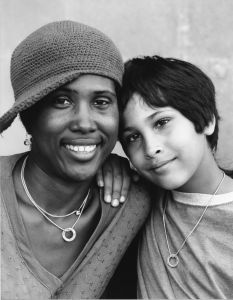 Raising teenagers is a frustrating business.
Raising teenagers is a frustrating business.
We are not sure how much freedom to give them or how much responsibility they can handle. We try to set limits, but we get lost in dealing with their defiance and counterwill. We are not sure when rebellion is healthy or when it is a sign of a deeper problem.
Interacting with them is confusing. Sometimes they behave like young children, yet at other times they seem adult-like.
One thing is clear: We have a responsibility to help them cross the bridge from childhood to adulthood successfully.
Crossing this bridge has become a much longer and more arduous journey than ever before. In traditional societies, this bridge was quite short, as children moved directly into the adult world, marrying at a young age and integrating into their family’s farm or business, and community. Today young people have many more options to choose from.
For the first time in human history, there is a youth culture that has its own codes, dress and behaviors, setting it even farther apart from the adult world. As a result, there are many ways of getting stuck or falling off the bridge to adulthood.
Dr. Gordon Neufeld explains that nature has provided two paths to adulthood:
- The first path is the master blueprint of maturation. This is the ideal path, but it is more difficult and less traveled.
This is the path to true maturation, where the adolescent discovers his true individuality and personhood. He has an explosion of awareness as he begins to think conceptually, reflectively and idealistically. He experiences the conflict and complexity of reality as he struggles to define his boundaries, priorities, values and goals. This path prepares him for integrating into society without losing his own true self.
It is exciting to see this remarkable and unique person emerge, discovering his own meanings and purpose in life!
- The second path is nature’s back-up plan. This is the road of conformity, the detour to adulthood.
Culture pushes the adolescent towards this path when it is concerned about more about fitting into society. The child “learns” how he is supposed to behave, and he takes on the form that others prescribe for him. His energy is invested in conforming rather than in discovering himself.
This is an acceptable way to reach adulthood, but it’s at the expense of the child’s true human potential.
Our role is to support our children’s journey on the path of maturation, all the way through the years of adolescence. We need to provide the right context — the right womb, metaphorically — for the birth of our adolescent’s own personhood. This context or womb gives us the ability to influence, guide and strengthen values. It creates a connection at the heart level and frees the spirit of the adolescent.
We need to provide them with times of meaningful involvement with us, so they can feel how important they are to us. We need to listen to their thoughts, ideas and opinions about how they understand the world. We need to initiate quiet walks together, meal times together and warm conversations with each other without the distractions of electronic devices.
We need to nurture this connection and make it easy for our teenagers to continue orienting to us, as they navigate the experiences in their lives that are often characterized by high drama, social confusion and immature perspective.
This vital connection also provides the context for another essential component of becoming an independent-thinking individual: creative solitude. In a world filled with social pressure and the never-ending distraction of smart phones, what’s up, and Facebook, we need to ensure islands of quiet space so our teenagers can explore their own ideas, interests, aspirations and creativity. Emergent energy can spring forth in this context.
We play a pivotal role in determining which path to adulthood our adolescents will travel — the path to true maturation or the path to conformity.
We live in a culture that believes teenagers need to separate from their parents in order to become independent. The opposite is true.
Teenagers have the best chance of becoming truly independent and responsible when they can depend on their parents and other caring adults to provide safe, secure and deep attachment through all the years of growing up.








